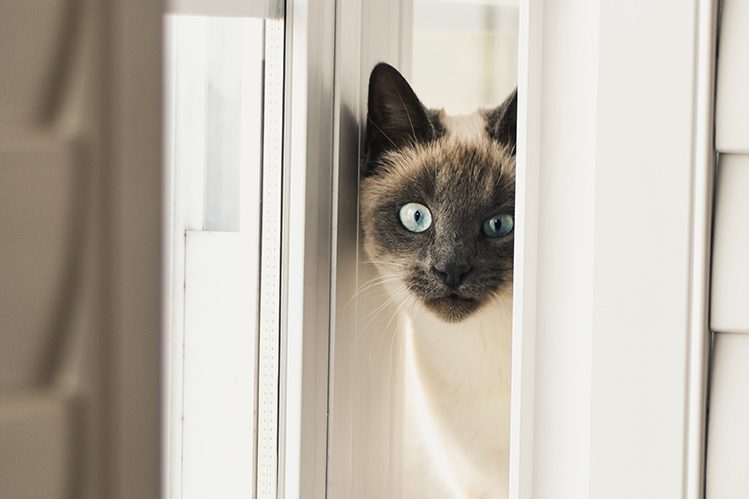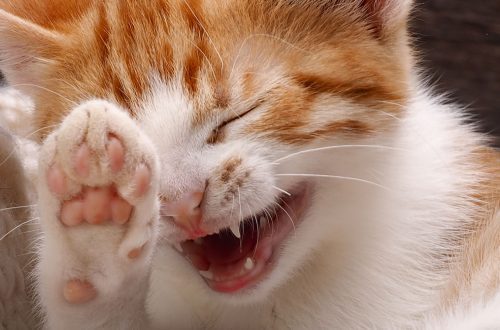
Is strabismus dangerous in cats?
Strabismus or strabismus is the deviation of the eyeballs from the normal position relative to the visual axis. A cat with this feature often looks like it has squinted its eyes at the tip of its nose. Let’s figure out whether strabismus in cats is dangerous for the health of pets.
Strabismus in cats is rare. It may affect one or both eyes. Strabismus is often explained by pathologies in the muscles of the eyeball or nerve fibers that give signals to the muscles. There are usually no problems with the eyeballs themselves with strabismus.
In convergent strabismus, also called convergent strabismus, the furry pet’s eyes appear to be fixed on the bridge of the nose. With divergent strabismus, both eyes seem to be trying to see objects from the sides, the pupils are close to the outer edges of the eyes. Divergent strabismus is also called scattering strabismus.
Strabismus occurs due to the fact that the visual axes of the cat’s eyes do not intersect. A four-legged friend sees a double image in front of him. If your pet has congenital strabismus, then there is nothing to worry about. This is a cosmetic defect. The brain of a four-legged friend adapts, your furry pet will not bump into objects and will be able to navigate.
But if your mustachioed pet with a normal eye position suddenly began to mow, this is a signal of malaise, injury, or an internal pathological process. In this case, the four-legged must be urgently shown to the veterinarian. Let’s consider the described situations in more detail.

If the kitten is already five months old and more, and the strabismus does not disappear, then this is a genetic feature. Your pet will have such a view of life forever. But strabismus in cats has almost no effect on the quality of vision. The furry creatures themselves will not think that something is wrong with their eyes. Cats with strabismus walk without problems and successfully hunt. And some become Internet celebrities. Such as the cross-eyed cat Spangles from the USA.
Some breeds are more prone to strabismus. Often there is strabismus in Siamese cats, Oriental and Thai. And in representatives of breeds related to the Thai. These are Balinese, Javanese cats.
Where is the relationship between breed and the tendency to strabismus in cats? It’s the acromelanism gene. Thanks to him, cats boast color-point color – light hair on the body and dark on the ears, paws and tail, their eyes are blue or blue. This gene is associated with features of the development of the optic nerve.
But representatives of other breeds are born and live with strabismus. Cats with this feature are obtained by mixing breeds, often strabismus occurs in outbred cats.
We emphasize that congenital strabismus is often accompanied by congenital nystagmus. So called rhythmic, oscillatory eye movements in the horizontal plane.

Much greater concern is caused by cases when strabismus appears suddenly in adult cats. This is a signal that something has gone wrong in the body. The sooner you show your cat to a veterinarian, the higher the chance of normalizing the pet’s vision, identifying hidden health problems and successfully treating it.
The problem is that strabismus in cats can appear due to trauma, tumors, inflammation in the body. That is why it is important to conduct a complete examination and find out the cause of strabismus. The cause depends on what treatment the doctor prescribes.
You will need to consult a veterinary ophthalmologist. The specialist will evaluate the pet’s reflexes and take measurements of eye pressure. If it is elevated, it may indicate glaucoma. Your veterinarian may refer your pet for ultrasounds, tests, brain MRIs, x-rays, and other additional tests. Tell the doctor what events in the life of your ward could affect his health. It is possible that a fall from a height or other damage is to blame.
If the strabismus is caused by problems with the vestibular apparatus, injury, or inflammation, a doctor will usually prescribe medication. If the veterinarian detects neoplasms in the orbits of the eyes, this problem is solved with the help of surgical intervention. Eliminating the root cause of strabismus helps to normalize the pet’s vision.
The sooner you pay attention to changes in the condition of your ward, the greater the likelihood of a favorable outcome of treatment. We wish health to you and your pet!





